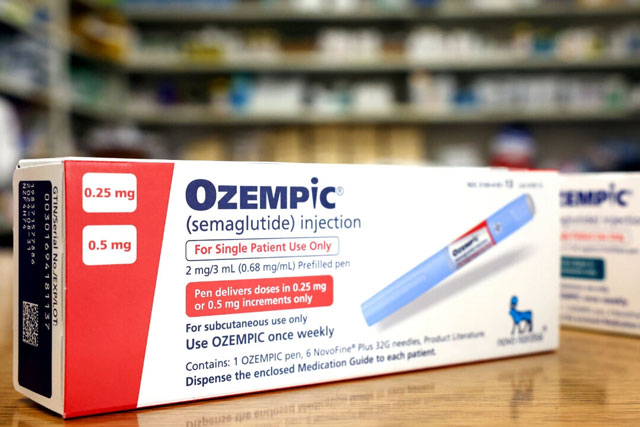Daijiworld Media Network -Washington
Washington, Nov 26: Medicare officials on November 25 unveiled the negotiated prices for 15 of the program’s most expensive drugs, anticipating an average reduction of 44 percent compared to last year, which could translate into $12 billion in savings. The new prices are set to take effect at the start of 2027.
These annual price negotiations, introduced under the Biden administration’s 2022 Inflation Reduction Act (IRA), allow the Centers for Medicare & Medicaid Services (CMS) to bargain directly with pharmaceutical companies—an authority previously prohibited by law.

Among the drugs seeing significant reductions is Novo Nordisk’s semaglutide, marketed as Ozempic for diabetes and Wegovy for weight loss, which will drop to $274 per month—down from the recent net price of $428 per month and far below the pre-rebate list price of $959.
Health Secretary Robert F. Kennedy Jr. stated, “President Trump directed us to stop at nothing to lower health care costs for the American people. As we work to Make America Healthy Again, we will use every tool at our disposal to deliver affordable health care to seniors.”
The negotiated price cuts range from 38 to 85 percent. Experts say that the largest reductions are for AstraZeneca’s leukemia treatment Calquence, Boehringer Ingelheim’s lung drug Ofev, and Pfizer’s breast cancer medication Ibrance, each dropping by more than $4,000 annually from expected net prices. Other notable reductions include GSK’s Trelegy Ellipta for asthma and COPD, falling to $175 from $654, and AbbVie’s Linzess for irritable bowel syndrome, down to $136 from $539.
According to William Padula, a professor of pharmaceutical and health economics at the University of Southern California, “They were gonna go to the table and try and push on those prices, and that’s what they did.”
Medicare Part D spends heavily on these medications, which treat conditions such as asthma, cancer, and diabetes, accounting for $41 billion in costs from November 2023 to October 2024. Last year, negotiations for 10 drugs led to 22 percent savings, and experts note that this year’s batch allowed for even more significant reductions due to methodology improvements and “more wiggle room” in pricing.
The pharmaceutical industry, however, has criticized the practice. Alex Schriver, spokesperson for PhRMA, said, “Whether it is the IRA or MFN [most-favored-nation], government price setting for medicines is the wrong policy for America.”
The IRA’s pricing decisions could also influence broader markets, as Sean Sullivan, a pharmacy professor at the University of Washington, explained: “These prices are going to come down below the existing net prices. There will be some real savings. All of the other payers can see them. What is going to stop them from asking manufacturers for that same price?”
While the cuts are significant, U.S. drug prices still remain higher than in other wealthy nations. After last year’s negotiations, medications like Pfizer-Bristol Myers Squibb’s blood thinner Eliquis and Amgen’s arthritis drug Enbrel remained more than double, and sometimes five times, the cost in other countries.
The IRA calculations consider manufacturer data and alternatives but do not factor in global rates. President Donald Trump has called for “most-favored-nation” pricing, seeking rates comparable to the lowest among OECD countries with at least 60 percent of the U.S.’s GDP per capita. His executive order in May could result in drug price cuts of up to 80 percent.
Legal challenges by companies such as Novo Nordisk, Novartis, and Bristol Myers Squibb have so far been unsuccessful, and congressional action in the One Big Beautiful Bill Act has delayed or excluded more than 300 drugs. Negotiations for 15 additional drugs, including hospital-administered medications, are slated to begin in February 2025.